The Pilgrims lived in Leiden, The Netherlands, from 1609 to 1620 before they embarked on the Mayflower for their voyage to the New World. You can still visit where the Pilgrims lived, worked, and worshipped in Leiden’s exceptionally well-preserved historical center.
The period in Leiden had a profound influence on the Pilgrims. They enjoyed the freedom of religion and self-governance and gained valuable knowledge at the University of Leiden. This experience and expertise would serve them well in the New World.
Walking through Leiden is like an open-air museum because Leiden’s center is exceptionally well preserved. All the important locations in the Pilgrim’s period in Leiden are within walking distance. The Pilgrim may have bumped into Rembrandt van Rijn in Leiden because Rembrandt lived in Leiden in the same period as the Pilgrims.
The video below lasts less than 2 minutes and will give you a fantastic impression of the city of Leiden and the streets that the Pilgrims walked on 400 years ago.
At the tourist information office in Stationsstraat 26 in Leiden, you can buy a booklet describing a Pilgrim’s Walking Tour in Leiden. This Pilgrim’s Walking Tour will last about two hours, and you will visit all the important sites in the Pilgrim’s lives in Leiden described below.
Where Did The Pilgrims Come From?
The Pilgrims were a group of English protestants from Nottinghamshire and Lincolnshire in England.
One of their leaders was William Brewster, who was brought up in the village of Scrooby in Nottinghamshire. Brewster held services of a separatist church in his family home in Scrooby.
Richard Clifton became their minister, and John Robinson, an influential leader of the Pilgrims in Leiden, was the Scrooby congregation’s assistant pastor. The author of Of Plymouth Plantation, William Bradford, was also part of this congregation.
They were not yet known as Pilgrims. The word Pilgrims was introduced later and came from a passage in Bradford’s journal, called on Plymouth Plantation, describing their departure from the Netherlands.
With mutual embraces and many tears, they took their leaves of one another, which proved to be the last leave to many of them
but they knew they were pilgrims and looked not much on those things, but lifted their eyes to heaven, their dearest country and quieted their spirits
William Bradford, of Plymouth Plantation

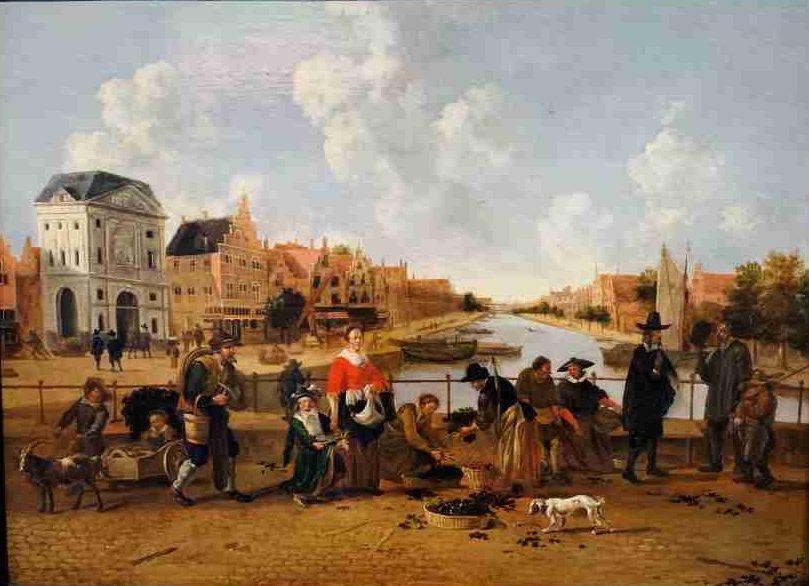
Why Did The Pilgrims Come To Leiden?
The Pilgrims came to the Netherlands to escape religious persecution for holding clandestine services that the Church of England did not sanction. Not participating in the services of the Anglican Church was a punishable crime in England in those days.
The Pilgrims were Calvinist dissidents who disliked the Anglican Church’s hierarchical authority and sought a more democratic and direct religious experience.
In 1608, the congregation fled to The Netherlands and, initially, settled in Amsterdam. Life in Amsterdam offered them the freedom to worship as they liked, but the community became involved in theological disputes with other English separatists who lived in Amsterdam, the Brownists.
These disagreements prompted many members of the Scrooby congregation to move to Leiden in 1609. Leiden was an obvious choice because it was the second-largest city in The Netherlands after Amsterdam.
An advantage of Leiden, compared to Amsterdam, was that Leiden had a university famous throughout Europe for its tolerance. Political and religious matters were openly debated at Leiden University.
Thanks to this tolerant atmosphere and individual freedom of conscience, Leiden became a haven for protestant refugees from all over Europe.
No honest persons will be refused free and unconstrained entry to the city of Leiden to take up residence
Furthermore, Leiden’s textile industry was booming and needed workers who wanted to work in this labor-intensive trade. Although it was not well paid, the Pilgrims could find work in Leiden immediately.
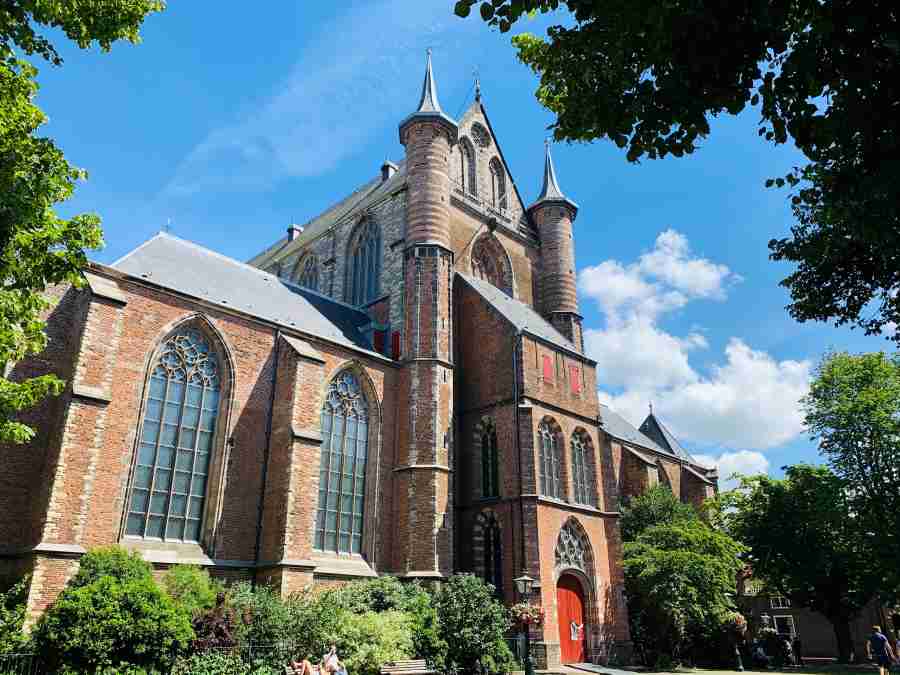
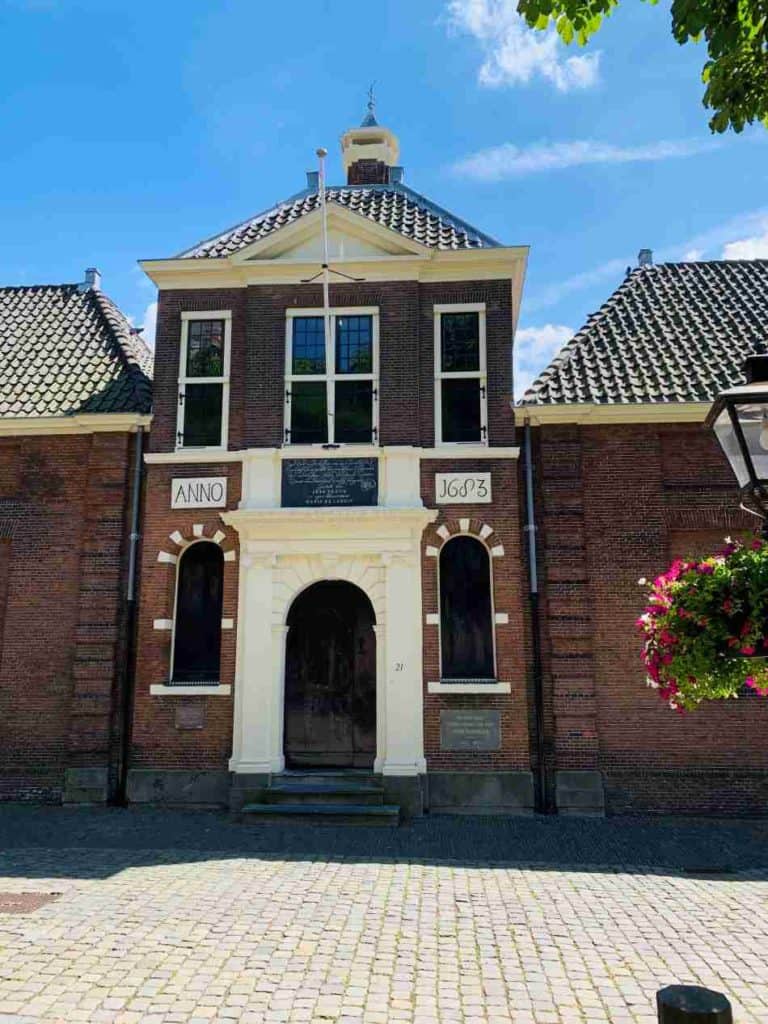
Where In Leiden Did The Pilgrims Live?
The Pilgrims lived in various parts of the city center of Leiden (see also map at the beginning of this article)
- In 1611, John Robinson, William Jepson, Henry Wood, and Jane Wood bought the so-called Green Alley in Leiden. Around 20 Pilgrim families lived and worked in The English Alley, opposite the Pieterskerk. The Jan Pesijnhof was built in this location in 1683, and this almshouse survived the centuries (number 1 on the map above).
- In 1617, Thomas Brewer bought the Green House next to the English Alley. Together with William Brewster, he owned and operated a printing press illegally. He was arrested and sent to England but could avoid a prison sentence because of his affiliation with the University.
- The printing press was operated in William Brewster’s house on the opposite side of the Pieterskerk in what is now called William Brewster Alley. Unlike Thomas Brewer, William Brewster was able to escape, and he did not get arrested. He and his family all embarked on the Mayflower and reached Plymouth.
- The other members of the congregation lived in various parts of Leiden. About three hundred Pilgrims were living in Leiden in 1620.
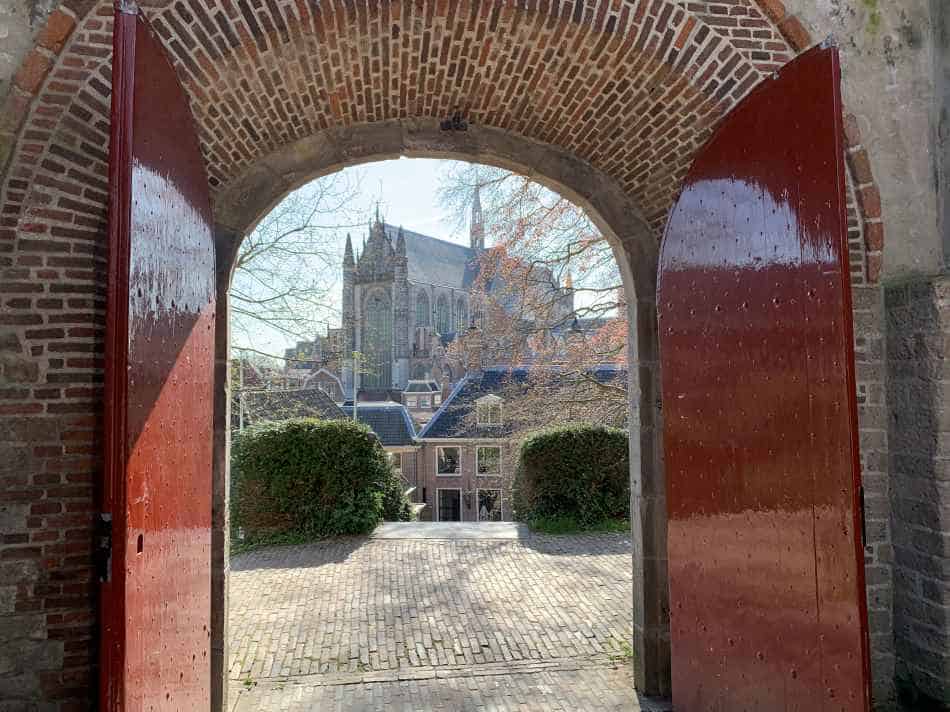
Why Did The Pilgrims Leave Leiden?
It is an interesting question why the Pilgrims decided to leave Leiden only 11 years after they sought refuge in Leiden.
There were four reasons why the Pilgrims were leaving Leiden and starting a new life in the New World:
- The Pilgrims were hoping to improve their economic situation.
- The Pilgrims found the Dutch culture too permissive for their children
- The Pilgrims were concerned about the political and religious instability of The Netherlands
- The Pilgrims were unsure if The Netherlands would win their independence from Spain.
The Pilgrims were hoping to improve their economic situation. Pilgrim William Bradford mentioned “the (economic) hardness of the place” as one of the reasons to leave Leiden. Most Pilgrims worked in Leiden as laborers in the textile industry and were poorly paid. Others worked as carpenters, tailors, and printers, which were also jobs that did not pay well. The Pilgrims lived in tiny houses in Leiden with large families and did not see any improvement in their economic situation in the foreseeable future.
The Pilgrims also found the Dutch culture too permissive for their taste, with too many temptations for their children. Pilgrim William Bradford commented on “the great licentiousness of youth” in Holland and lamented the “evil examples” and “manifold temptations of the place.” It seems that their children were becoming a little bit too Dutch….!
The Netherlands was not yet a stable country, which concerned the Pilgrims. During the armistice with Spain from 1609-1620, internal theological and political conflicts in The Netherlands became apparent. John Robinson participated in the fierce theological disputes about predestination and free will at the University of Leiden. In 1618, The Netherlands was on the verge of a civil war when the Prince of Orange chose sides in the theological debate, staged a coup d’état, and prevented a civil war.
The end of the armistice with Spain concerned the Pilgrims because it was unclear if The Netherlands would hold out against Spain. A Spanish victory in the war with The Netherlands would be disastrous for the Pilgrims because catholic Spain would persecute protestants like the Pilgrims.
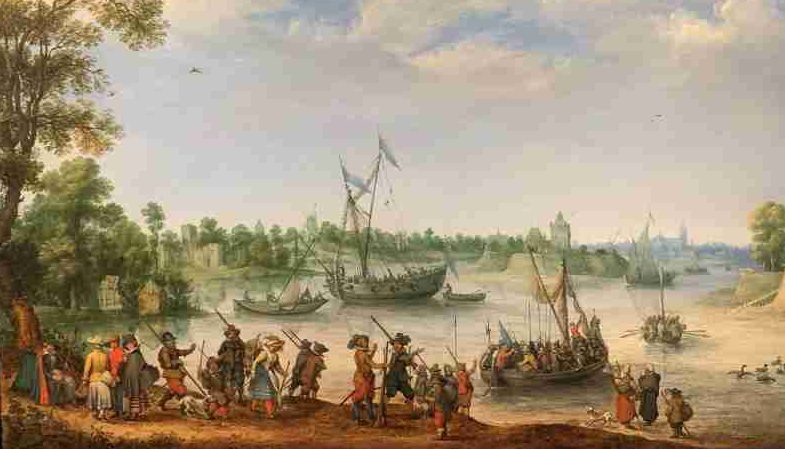
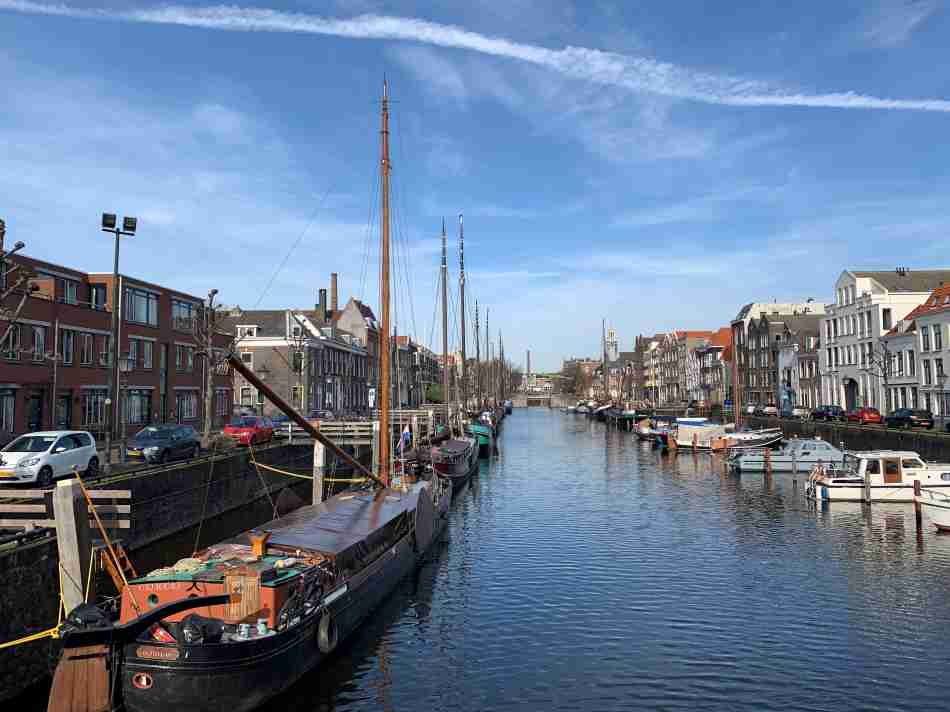
How Many Leiden Pilgrims Traveled To America?
In 1620, the Pilgrim congregation in Leiden counted ± 300 souls. Clearly, the entire congregation could not come to America on this first journey. Those who could settle their affairs in Leiden went first, while the majority stayed behind in Leiden.
Forty-six members of the Pilgrim congregation in Leiden departed in 1620 to travel to America. Among them were 16 men, 11 women, and 19 children. Other Pilgrims followed later, but many Pilgrims also decided to stay in Leiden and blended in with the Dutch population.
It must have been an emotional departure. As some stayed behind in Leiden, many families were split, planning to join them in the New World after the front-runners had established the colony.
John Robinson, the Pilgrim’s pastor, stayed in Leiden, planning to join them later. However, John Robinson died in Leiden in 1625 and was buried in the Pieterskerk opposite his home.
The Pilgrims left Leiden and sailed on the river Vliet to Delfshaven near Rotterdam. In Delfshaven, they embarked on the Speedwell and sailed to Southampton, where the Mayflower was waiting for them.
In another article, I described the first leg of the Pilgrim’s voyage to America (from Leiden to Delfshaven).
Not all 46 Pilgrims from Leiden could embark on the Mayflower in Southampton because the Mayflower could not carry everybody. Therefore, nine Pilgrims from Leiden had to stay behind in Southampton.
Hence, not all of the 102 passengers on the Mayflower were “true” Pilgrims. Most Mayflower passengers were selected for their practical skills that would come in handy in a new colony’s foundation.
Therefore, only 41 out of the 102 Mayflower passengers were Pilgrims, and 37 out of those 41 Pilgrims came from Leiden.
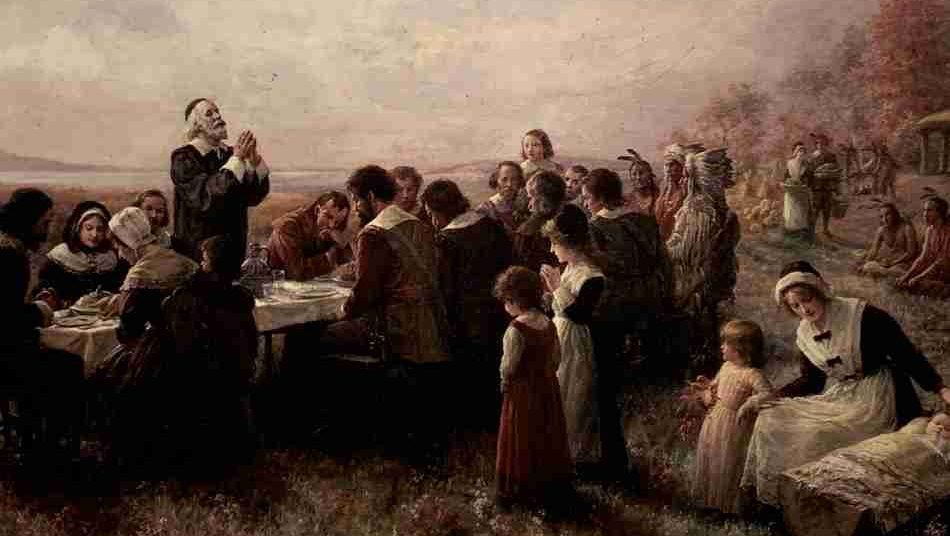
How Did Leiden Influence The Pilgrims?
Leiden had a profound influence on the lives of the Pilgrims – even after their departure.
In Leiden, the Pilgrims experienced religious freedom and the right to worship as they wished for the first time in their lives and experienced a form of self-governance in Leiden that made a lasting impression on them.
Self-government
The Pilgrim leaders realized they needed a temporary government authority when disagreements broke immediately after the Mayflower arrived in the New World. Isolated as they were in America, the government could only come from the people themselves.
So, aboard the Mayflower, they prepared and signed a written agreement or compact among themselves. The Mayflower Compact is believed to be written by William Brewster from Leiden and bound the signers into a “Civil Body Politic” to pass “just and equal Laws . . . for the general good of the Colony.”
Those words expressed the idea of self-government for the first time in the New World and were inspired by what the Pilgrims had experienced in Leiden.
Civil Marriage
The Dutch invented civil marriage in the sixteenth century because only marriages in the Protestant state church were valid. That was impractical because The Dutch Republic still had a significant Roman Catholic minority, and marriage determined children’s property rights and legitimacy.
The introduction of civil marriage solved this problem, and civil marriage had legal validity. The Pilgrims introduced this practical Dutch concept of civil marriage in America because they were without a pastor for the first few years.
Thanksgiving
After the relief of Leiden’s siege in 1574, Leiden celebrated this event yearly with festivities on the 3rd of October.
There is a theory that Thanksgiving has elements of this Leiden tradition, combined with aspects of a harvest festival. The first description of Thanksgiving contains a military parade description as was customary in Leiden in the early seventeenth century.
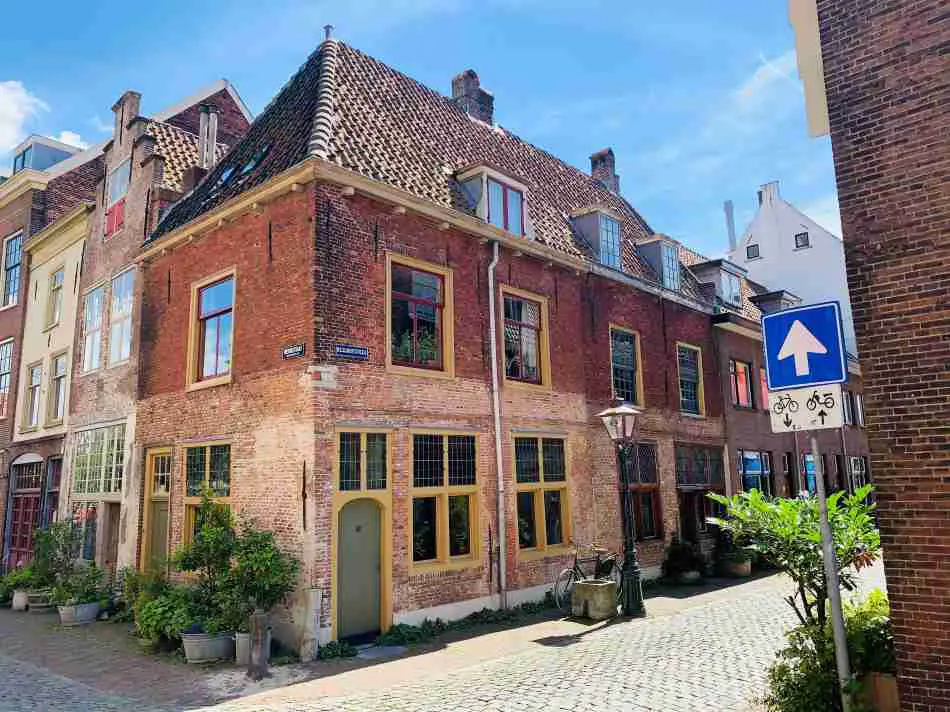
Where Is The American Pilgrim Museum In Leiden?
I highly recommend visiting the Leiden American Pilgrim Museum in the Beschuitsteeg 9 in Leiden if you visit Leiden and would like to explore the period of the Pilgrims in Leiden in more detail. The museum is housed in a building from the fourteenth century, an appropriate setting for this beautiful museum.
In 2020, 400 years ago, the Pilgrims set sail for the New World and founded the United States of America. There is a fantastic website, the trail of the Mayflower, that describes the story and journey of the Pilgrims.
This website covers much of the Pilgrim’s story after their Leiden period and provides much information about their life in the New World.

